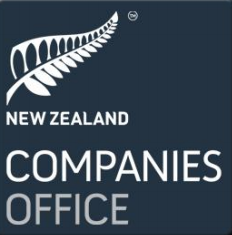Newsletter
Lay Dodd News - Spring 2015
26 August 2015
IN THIS ISSUE:
- The Retirement Village Option
- Lifestyle Paradise or a Financial Cost?
- IRD Looking at Employee Allowances
- New requirement for Companies
- Investing in PIEs
- Understanding how your Portfolio Investment Entities (PIEs) are Taxed
First steps in strengthening Property Tax Rules
The Taxation (Land Information and Offshore Persons Information) Bill introduced on 22 June 2015 contains proposed amendments to the Land Transfer Act and the Tax Administration Act.
The Bill contains two proposals to strengthen the property tax rules being:
- The requirement to provide an IRD number at the time of property transfer (and a Tax Identification Number for people resident in another country).
- The requirement for offshore persons to provide a New Zealand bank account number to obtain an IRD number.
The first of these changes will see further disclosure requirements at the conveyancing stage of a property transaction. Parties to a property transaction will be required to provide their IRD number (or Tax Identification Number) as part of the conveyancing process although some exceptions apply.
The IRD number requirement does not apply to a New Zealand individual buying or selling their “main home”. This is a defined term. The “main home” exception does not apply where a person is selling their third main home in a two-year period.
This information will be collected by conveyancers from property vendors and purchasers, and provided to Land Information New Zealand (LINZ) which in turn will provide the information to Inland Revenue. This will impose a greater level of costs for the extra work required by conveyancers.
Although it may be tempting for some to simply make up an IRD number, it is an offence to provide false information and a $25,000 fine can be imposed for a first offence ($50,000 thereafter).
The second proposal is to require all non-resident IRD number applicants to have a New Zealand bank account. A nonresident for the purpose of being issued an IRD number will be defined as an “offshore person”, with this definition using elements of the Overseas Investment Act definition of overseas person. It is not clear how the rules will apply, if at all to existing non-residents that already hold IRD numbers. A clause is being introduced to ensure this information is immediately provided on a person becoming an “offshore person” as defined.
TIP: SPECIFY HOW PAYMENTS ARE TO BE MADE – Disputes often revolve around money, so be as specific as possible regarding payment details. List dates, conditions, requirements and methods of payment (cash, cheque, credit). Consider including a provision that work will only commence once funds have cleared the bank.
The Retirement Village Option – Lifestyle Paradise or Financial Cost?
The growth of the retirement village industry is a defining feature of lifestyle for the elderly in the 21st century. Many elderly people view moving into a retirement village unit as a safe, secure and convenient way of life. However the financial and opportunity costs involved in entering into a retirement village need to be carefully considered.
A Licence to Occupy vs Freehold Title – The Nature of the Retirement Village Arrangement
A person enters into a retirement village unit on the basis of an occupation right agreement, or a licence to occupy. This licence grants no ownership rights in the unit and can be compared to a long-term rental agreement or a lease for life. The principal feature of such licences is the requirement for the intending resident to pay an up-front capital sum to the village in exchange for having the exclusive use of a designated unit, apartment or villa as well as shared use of the common areas and facilities such as swimming pool, gardens and bowling greens.
Capital Cost v Camaraderie and Community
The capital sum is typically in the range of between $400,000 to $600,000. The resident is also required to pay a weekly facilities fee in the range of $120 to $180. The licence will terminate upon the death of the resident and in other limited circumstances. Upon termination, the resident’s estate will receive a partial refund of the capital sum. The village makes a deduction of around 30% from the capital payment. The weekly facilities fee is non-refundable.
A resident therefore invests around half a million dollars and receives about 70% of this investment back on termination of the licence, noting that termination may occur five, ten or even twenty years after entering into the arrangement. Zero growth of the capital sum paid is achieved, indeed a resident’s capital investment reduces in return for the resident’s right to occupy and enjoy the unit and facilities.
On the upside, retirement villages can offer a thriving community of support and camaraderie in one’s old age. The benefits of having other people around, at a similar stage of life, cannot be overstated, particularly with residents who are widowed. Safety and comfort for the elderly are also paramount considerations and are inherent in the make-up of the typical retirement village.

TIP: KNOW WHAT YOU WANT TO ACHIEVE – The more certain you are about what you’re negotiating, the easier it is and the less time it takes to reach agreement or know that this will not be possible
Many industries pay tax free allowances to employees. In a number of cases the amounts are fully justified and reasonable. But sometimes the boundaries between what is tax free and what is taxable can be given a bit of a push.

Is that tax free allowance really a reimbursement of the actual or a reasonable estimate of the cost incurred by the employee? Or is the amount inflated and disguised as a tax free allowance to boost the pay packet? Or perhaps it’s not really a reimbursement for any expenditure incurred, but just called that.
We’ve heard the IRD are currently looking into the tax treatment of allowances paid to employees in the forestry industry. If that proves lucrative, no doubt other industries will follow.
TRAP: TRUST IS NOT A SUBSTITUTE – Don’t fall into the trap of entering into agreements haphazardly or with complete trust in the other party. Even if it’s a family member (some may argue especially in this case), a business contract should protect your own business interests first. Seek advice to ensure that the deal is fair to you.
New requirements for Companies

From 1 May 2015 new registration requirements came into force for applications to incorporate a New Zealand Limited Liability company. All New Zealand incorporated companies must have at least one director who lives in New Zealand or who lives in Australia and is a director of an Australian incorporated company. Existing companies on the companies register will have until 28 October 2015 days to comply with these New Zealand ‘resident director’ requirements.
In addition, all directors must provide their place (city and country) and date of birth and all companies must supply their ultimate holding company details (if applicable).
We will be in contact with you if your Company is affected.
TRAP: FEAR OF CHANGE AND THE UNUSUAL – Often it is the fear of change or of doing something that is different from the norm that prevents a business from implementing innovative ideas. In most cases it is possible to test an outcome and limit major risks. Often when you consider the worst case scenario, it is still worth going ahead.
Investing in PIEs
- Understanding how your Portfolio Investment Entities (PIEs) are Taxed
Many New Zealand managed funds are now registered with the Inland Revenue Department as PIEs or Portfolio Investment Entities. Usually the tax paid by PIEs is the final tax, and you do not need to include anything in a tax return for these investments. However there are a few things that you need to be aware of and to communicate to your fund manager.
OVERVIEW

The tax for Portfolio Investment Entities (PIE) works differently than other types of investments. The tax paid at the PIE level is usually a final tax, so the individual investors do not have to return their PIE income or pay further tax.
When an individual invests into a PIE, the PIE manager is required to collect a declaration from the individual recording their ‘prescribed investor rate’ (PIR). Income that the PIE earns is attributed to each investor.
The investor will then receive the benefit of the income derived by the PIE on their behalf, less any tax paid on that income (at their prescribed investor rate).
When a PIE makes a loss, a tax rebate is paid to the PIE equivalent to its loss at the investors’ PIRs.
The income of a PIE will be reflected in the unit price, with units being cancelled or issued to reflect the tax paid to, or refunded by Inland Revenue.
Listed PIEs operate slightly differently and are taxed under different rules.
BACKGROUND
A major driving force behind the PIE regime was the introduction of the Kiwisaver scheme. This prompted the Government to remove some of the disadvantages of investing through managed funds. The PIE regime allows individuals to invest into Kiwisaver (and other PIEs) and not have to worry about filing personal tax returns.
OTHER MATTERS
Benefits of the PIE Regime
Investing through a PIE has several additional tax benefits:
- PIE income is excluded income so it does not automatically increase your marginal tax rate.
- Your PIE income is taxed at a maximum rate of 28%, if taxed appropriately.
- PIE income (if taxed at a high enough rate in the PIE) does not mean you’ll need to file an income tax return, if prior to investing in a PIE you did not have to.
Some things to watch
There are several tax issues to be aware of when investing in a PIE and filing your tax return (if needed).
- If you have tax losses from other sources, your PIR will still be at least 10.5%. If investment income was earned directly, the losses would offset the taxable income and no tax would be paid.
- The mechanism to correct an incorrect PIR operates only if too little tax is paid by the PIE. If too much tax is paid, there is no ability to recover it.
- Make sure you understand the nature of your investment. PIE income is not generally returned, but other investments including non-PIE managed funds, could give rise to taxable income that needs to be returned.
